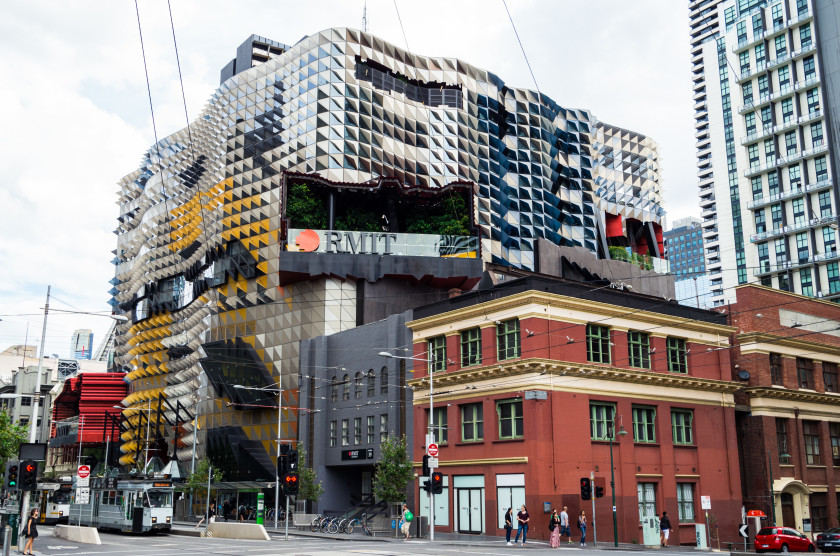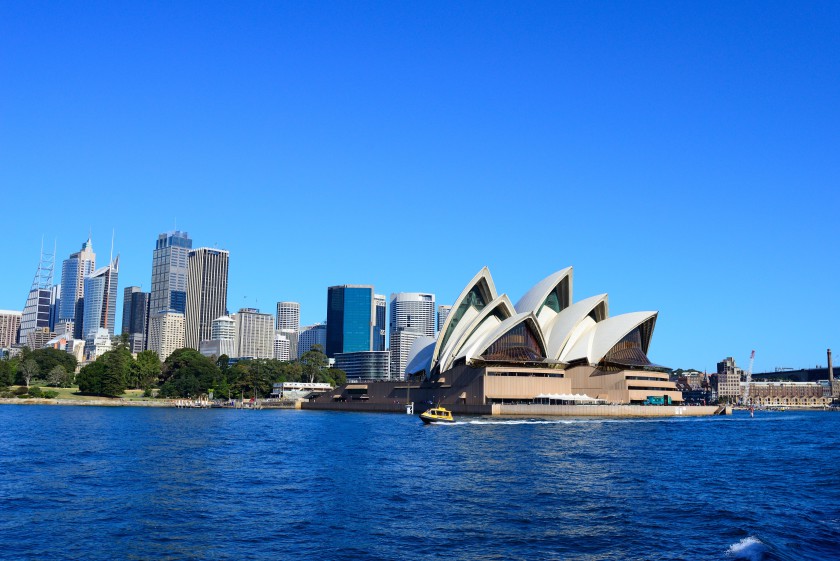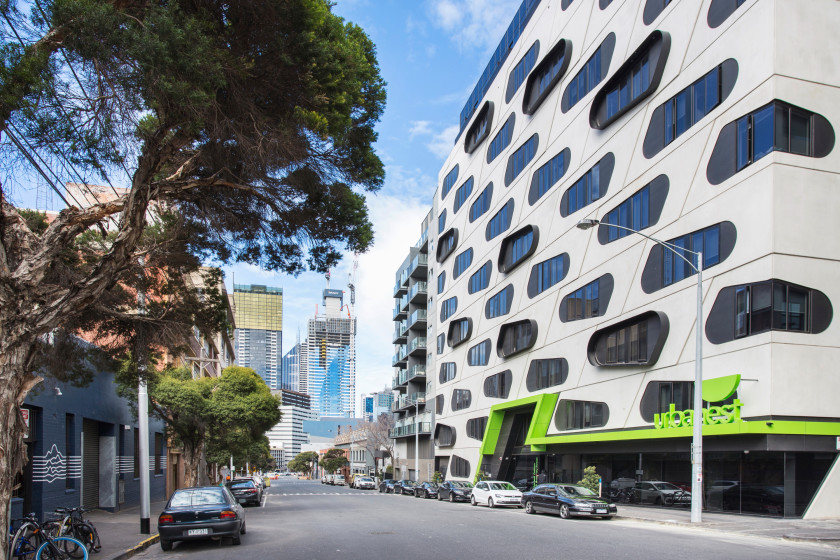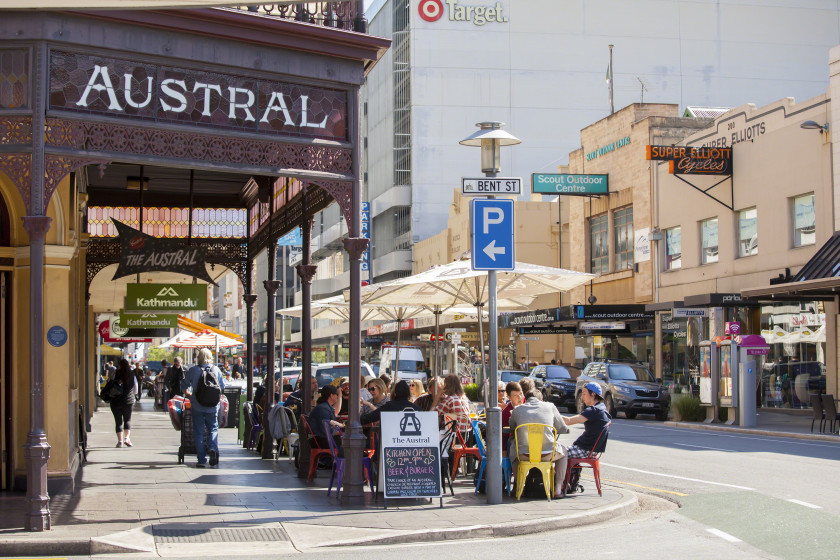A couple of weeks after the annual Australian International Education Conference (AIEC), Christopher Ziguras reflects on the success of the event and the excitement in the sector.
The AIEC is co-hosted by the International Education Association of Australia, of which he is President and this year’s gathering was record-breaking, with the largest ever contingent of participants from all over the world flying to Melbourne to take part. Professor Ziguras explains how the conference is an opportunity for stakeholders to come and learn “what’s new and exciting about international education in this part of the world”.
As well as presiding over the IEAA, Ziguras is Deputy Dean International at RMIT University in Melbourne, where he spends a lot of his time supervising honours students, marking theses and mentoring students from all over the world. It’s an exciting time for international education in Australia, as numbers of inbound and outbound students grow and other countries look Down Under to emulate their success in boosting student satisfaction, managing their academic reputation abroad and aligning government policies with the objectives of higher education institutions.
We shine the spotlight on Australia’s flourishing international study sector and speak to Professor Ziguras about what’s changed over the past few years and how investment in student accommodation is transforming the face of the country.

Recently, I spoke to Vivienne Stern of UUKi and she said Australia is now in a really exciting time for international education. What noticeable changes have you seen in the sector over the past year?
We’re lucky that in Australia we’ve got a fairly stable environment. Because international education is such a large part of our education system, it’s taken very seriously by governments and policy makers. One of the association’s key roles is to work with governments of various kinds – state, local, commonwealth governments and political parties – to make sure that they’re very well aware of what’s happening in the sector. Since the IEAA was founded 10 years ago, it has really helped to enhance the coherence and stability of the policy in this country. Most of the time, institutions are able to innovate and develop programmes and relationships in a very sensible way, without governments getting in the way. In many countries, particularly in the UK, I think that’s a huge frustration for institutions. The institutions objectives and the government’s objectives really don’t match.
How do you think this stable environment affects international students themselves?
The number of international students coming here is at an all-time high and growing, which makes people optimistic. The number of outgoing students is also at an all-time high so we’ve got a stronger bilateral, bidirectional flow than we’ve had in the past and our students are very receptive to overseas study. Australians travel a lot but up until a few years ago, the proportion who travelled as part of their studies wasn’t that high, probably lower than most of Europe and the US. Since then, a few things have changed. The government has put some resources into supporting overseas study, which has been great. Institutions have realised that students are very keen to study overseas as part of their degrees. Students are receptive and that makes the classroom dynamics better as students who study overseas are more interested in learning about the rest of the world, they’re more interested in students who come from other parts of the world and they bring that knowledge and interest into the classroom. All those things are heading in the right direction for now.

What do you think are the biggest growth opportunities for Australia over the coming years?
We’ve had a very large number of international students in Australia for a long time and at university level, they make up over a quarter of the population so I think that will continue to grow in a natural way. The most interesting new areas of development are really in the use of social media to reach prospective students and to connect students. Social media connects current students with their institutions and allows prospective students to find out about study at a university by seeing what existing students are doing and posting. For me, one of the most interesting areas of development is online collaboration within teaching. In Australia, online resources and collaboration are used fairly extensively. What people are doing more of now is connecting with students in other parts of the world to do joint projects and group work with students in other places, which simulates the increasingly international nature of professional work in more and more disciplines. In many areas of professional life now, you work in teams with people who are in different parts of the world, so I think in many ways the study experience, through incorporating remote communication, distributed teamwork and periods of short-term international study is starting to reflect professional life.
Have you noticed any interesting trends emerging over the past couple of years in terms of the flow of students from different source countries?
I think there’s interest in diversification and recruiting students from many places, but it depends on the institution and how much of a concern that is. China is our biggest source country but the proportion of Chinese students in each institution varies enormously. There are some colleges which have, almost exclusively, Chinese students and are quite happy to be a provider of education solely to students from China. There are other institutions who want a broad mix of students from many nationalities in the classroom. In the past, there’s been a big push to try and attract more students from Latin America. We now have tens of thousands of students from LatAm, but predominantly they’re studying ELICOS (English Language Intensive Courses for Overseas Students) and vocational programmes, which are shorter qualifications. Many of those students have degrees in their home countries and are coming here to obtain some English language proficiency and specific vocational professional skills, which is great. There are questions now about why Latin America students haven’t been so interested in coming to our universities.
In the UK, for example, managing the country’s reputation around Brexit is a major concern for international education stakeholders. What are the biggest challenges Australia is facing with international recruitment?
The cost of living in Australia is probably the biggest concern for people and the cost of accommodation particularly, in our capital cities. But as the exchange rate drops, Australia becomes more affordable to international students. But we can’t really do much about the exchange rate. The cost of living here is as much a challenge for locals as it is for international students. As the number of students continues to grow, accommodation becomes more of an issue. The situation here is much healthier now than it was. Just over five years ago, we had large numbers of students and shortages of good quality accommodation. There were newspaper articles about students sharing apartments with four bunks in a room, there was overcrowding and landlords were charging exorbitant rents. We don’t hear so much of those stories anymore. There’s been a huge investment into accommodation in the last few years, particularly into apartments in inner-city areas. Where I work at RMIT, my office building is surrounded by cranes building huge, high-rise apartment blocks. A lot of that is driven by demand from international students and their families, in particular.

Why do you think investment in student accommodation has grown over the past few years?
Accommodation was seen a few years ago as one of the biggest limiting factors to the quality of life for students and it was also limiting the number of students who would be able to study in Australia. The investment in the sector is really changing both of those factors. The scale of international student accommodation in some of the inner city areas is completely transforming whole neighbourhoods and bringing a lot more people onto the streets and a lot more restaurants, clubs, services, supermarkets are opening. Areas of cities that were fairly empty and deserted five years ago are becoming really busy and vibrant. Local governments across Australia see that so when they’re thinking about urban renewal and regeneration, they’re thinking about how to bring students into inner cities. The University of Tasmania, for example, has got some funding from the state government to move some of its campuses from the outskirts of some regional centres right into the downtown areas and business districts.
You’re obviously very familiar with the International Student Survey results, unveiled recently at the AIEC in Melbourne, which show 88% student satisfaction in Australia. What do you think is driving this satisfaction?
The student satisfaction rates have been fairly stable over time. The quality of life for international students in Australia has been pretty good and the data reflects that. One thing I’ve seen change over the last five years is the sophistication of the international student ecosystem – the world in which international students live. It’s becoming much richer. The world of food, retail and fashion has been transformed in Melbourne and in many other parts of Australia. In Melbourne, for instance, there are literally hundreds of thousands of international students so there’s a very large population of vibrant, mobile young people. They’re also starting and creating businesses. The world in which they, and local students live, has a commercial vibrancy and drive of its own.
What is the IEAA’s plan over the next couple of years to boost Australia’s reputation as an international student destination and to boost outbound numbers?
One thing we’re focused on is the unevenness of familiarity in the domestic community of international students and international education. There are some people who work in the education system and accommodation sector and in inner-city areas who deal with international students every day. At the other end of the spectrum, there are people who might live in rural parts of Australia or in suburban areas who almost never come into contact with international students and who are not familiar at all with international education. In between, there are lots of different segments of the population who come into contact with international students in various ways.

We’re doing some research now on the impact on those communities of international education, to try to understand those segments of the population a bit better, to work with them to better their understanding of the students they come in contact with and help them appreciate the opportunities afforded to them by having such a large population of mobile young people from overseas in Australia. For example, banks, airlines and accommodation providers are very familiar with international students but then you have retailers, cinemas and service providers who deal with international students but don’t realise that a lot of their clientele are international students. Local governments are also starting to realise a large proportion of the population are international students.
The next stage for the organisation is going to be identifying each of those groups and working with them to better understand how they engage with their population of young people. I guess we want to avoid what we see happening in the UK and in the US, where there’s a polarisation of views about immigration and about mobility from overseas. We’ve got elements of that polarisation, but overall Australia has been a very welcoming place to visitors and migrants for a long time and we’re keen to make sure that that positive sentiment is supported.
You wrote a paper on ‘Good Practice in Enhancing the Social Dimension of International Student Experience On and Off Campus’. Based on that, what do you think are the key elements in engaging international students before they study abroad and once they arrive?
It’s about making sure the students are able to find out a lot about the place they’re going before they arrive. I think we’re doing ok in that area in Australia, there’s quite a lot of online resources about places and services.
When students arrive, there’s always a period of adjustment and culture shock. During that phase, students are typically overwhelmed with a barrage of new information but there’s a lot of support provided at that point. Once the students are settled, most students will find communities, groups, clubs and little social or cultural niches that they identify with so they’ll find their place in Australia pretty quickly. Invariably, there are students who don’t and who feel quite isolated and vulnerable, which is a feature of student life and life as a young person in any place these days.
Having a place to go, which is focused on international students and where they can find people who understand what they’re going through is really important. In Melbourne there’s a student support centre, which is staffed by social workers and international students. Students can go and talk to someone in the centre and be directed to the appropriate services or advice. That centre is doing fantastically well and we’re seeing other, similar initiatives around the city. We’re lucky in Australia that we have support from our governments, but the fact that a centre like that is running and viable is a reflection of the large number of students we have in our cities.
Christopher Ziguras is the President of the IEAA and Deputy Dean International at RMIT University.
